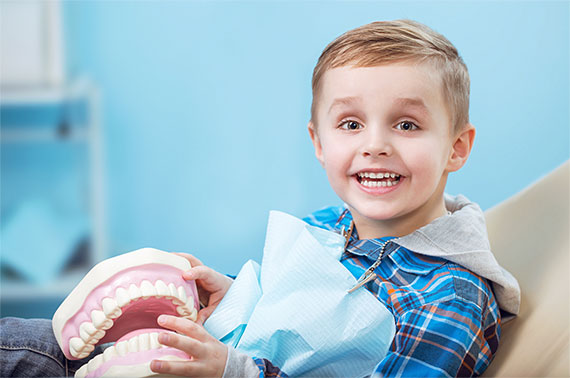-
7 Signs of Sleep-Disordered Breathing in Children
January 6th, 2022 | by Helen Fung7 Signs of Sleep-Disordered Breathing in Children: What Parents Should Know
Sleep is a crucial component of a child’s overall well-being and development. When it comes to children, quality sleep is essential for growth, cognitive function, and emotional stability. However, sleep-disordered breathing can disrupt a child’s rest and potentially lead to various health issues. As a parent, being aware of the signs of sleep-disordered breathing is vital to ensure your child receives the proper care and attention they need. In this article, we will explore seven signs of sleep-disordered breathing that every parent should be mindful of.
1. Loud Snoring:
While occasional snoring is common in children, persistent loud snoring can be a sign of sleep-disordered breathing. Snoring occurs when airflow is partially blocked during sleep. If your child’s snoring is loud and occurs regularly, it may indicate an issue with their airway.
2. Breathing Pauses:
Observing breathing pauses during your child’s sleep is a significant red flag. If your child seems to stop breathing for a few seconds or takes shallow breaths during the night, it may suggest a form of sleep apnea. These pauses can disrupt your child’s sleep cycle and affect their overall sleep quality.
3. Restless Sleep:
Children with sleep-disordered breathing often experience restless sleep. If you notice your child tossing and turning, frequently changing positions, or experiencing night sweats, it might indicate their body is struggling to maintain an open airway during sleep.
4. Mouth Breathing:
Pay attention to your child’s breathing pattern during sleep. If your child predominantly breathes through their mouth instead of their nose during sleep, it could indicate an airway obstruction or nasal congestion, potentially related to sleep-disordered breathing.
5. Frequent Daytime Fatigue:
Children with sleep-disordered breathing may experience daytime fatigue and sleepiness. If your child appears excessively tired during the day, has difficulty concentrating, or seems irritable, it could be due to disrupted sleep at night caused by breathing issues.
6. Behavioral Problems:
Sleep-disordered breathing can manifest in behavioral changes. Children may experience mood swings, attention deficits, and even hyperactivity. If you notice a sudden change in your child’s behavior or academic performance, consider evaluating their sleep patterns.
7. Enuresis (Bedwetting):
Bedwetting, especially in older children who have already been toilet trained, can be a sign of sleep-disordered breathing. The interrupted sleep cycles can affect the brain’s ability to control the bladder during the night.
Conclusion
Recognizing the signs of sleep-disordered breathing in children is crucial for their overall well-being. If you observe any of these signs in your child, consider consulting a pediatrician or a sleep specialist. Early detection and appropriate management of sleep-disordered breathing can significantly improve your child’s quality of sleep and long-term health. Prioritize your child’s sleep and ensure they receive the necessary care and attention for a healthy and restful night’s sleep.
If you have concerns about your child’s quality of sleep, complete a Paediatric Sleep Questionnaire here, to see if further investigation can help your child.
-
The first dental visit
May 31st, 2017 | by Helen FungIntroducing your toddler to their first dental visit is an important milestone in their oral health journey. Starting early can set the stage for a lifetime of good dental habits and a positive attitude towards dental care. The first dental visit may seem daunting, but with the right approach and preparation, it can be a smooth and even enjoyable experience for both you and your child. At Tooth Town, we will help your child to get familiar with the clinic, and explain our procedures to him/her using easy words.
As many children require time to adjust and familiarise themselves with a new environment, our paediatric professionals are prepared to do everything possible to make your child’s first visit an enjoyable experience. We always try to involve parents by having them assist in the knee-to-knee exam. This partnership sends the message to your child that dental care is important. If any areas of concern are identified, we will explain these concerns, and ensure that your child gets the care they deserve. This is also a great opportunity for us to answer any questions you may have. We can also provide advice on how to care for the teeth and get your child off to a cavity-free childhood.
What can I do to prepare my child for their first dental visit?
There are a few simple tips you can do to prepare your child for the first dental visit:
-
Start early, and choose the right time.
The Australasian Academy of Pediatric Dentistry recommends that a child’s first dental visit should occur by their first birthday or within six months of their first tooth erupting. Starting early helps in preventing dental problems and getting your child accustomed to dental care from an early age.
Choose a time for the appointment when your child is typically well-rested and cooperative, usually in the morning. Avoid scheduling dental visits during their nap time or close to meal times, as they might be more irritable during these times.
-
Keep It Positive and Play Pretend
Make the first dental visit a positive experience by using positive words and a cheerful tone when discussing the appointment. Avoid using any negative or frightening words like “pain,” “shot,” or “hurt.” Avoid trying to reassure your child by using phrases such as “it won’t hurt” or “there’s nothing to be afraid of.” These kinds of comments can introduce ideas of fear where none existed previously.
Emphasize that the dentist will count their teeth and make sure they are healthy. You can play pretend at home, taking turns being the dentist and the patient. Let your child use a toy toothbrush to “brush” their dolls or stuffed animals’ teeth, and then you can be the dentist, counting their teeth and making it a fun game.
-
Visit a Pediatric Dentist
Choosing a pediatric dentist, who specializes in treating children, can make a significant difference in your child’s experience. Pediatric dentists are trained to create a child-friendly environment and are skilled in dealing with the unique needs and fears of young children. They know how to make the visit fun and less intimidating.
-
Be a Good Role Model
Children often learn by observation, so demonstrate good dental habits to your child. Let them see you brushing and flossing your teeth regularly and emphasize that visiting the dentist is a normal and important part of staying healthy.
-
Role-Play the Dental Visit
Role-playing a dental visit can be a great way to familiarize your child with what to expect. Take turns being the dentist and the patient, pretending to count teeth and using a toy toothbrush. Make it a fun and light-hearted activity.
-
Stay Calm and Comforting
Your child may sense if you are anxious or stressed about the visit, so try to stay calm and reassuring. Reassure them that you will be right there with them throughout the visit and that the dentist is friendly and wants to help them.
-
Offer a Reward or Incentive
Offer a small reward or incentive for their good behavior during the dental visit. It could be a special treat, a sticker, or a small toy. This positive reinforcement can help create a positive association with going to the dentist.
-
Bring Comfort Items
Allow your child to bring their favorite comfort items, such as a stuffed animal or blanket, to the dental visit. Having something familiar can provide a sense of comfort and security during the appointment.
-
Stay Patient and Understanding
It’s natural for young children to feel apprehensive about new experiences. If your child becomes upset or anxious during the visit, stay patient and understanding. The dental team is accustomed to working with children and will know how to handle the situation.
-
Schedule Regular Check-ups
After the first visit, make sure to schedule regular check-ups as recommended by the dentist. Consistent dental visits will help maintain your child’s oral health and ensure any issues are addressed promptly.
Conclusion
Introducing your toddler to their first dental visit is an important step towards fostering good oral health habits from a young age. By starting early, using positive reinforcement, choosing a pediatric dentist, and maintaining a calm and supportive environment, you can set the stage for a lifetime of healthy smiles. Remember, making the experience positive and enjoyable will set the tone for future dental visits and contribute to a lifetime of good oral health habits.
-
-
What are baby teeth
May 15th, 2017 | by Helen FungPrimary teeth, commonly called baby teeth, start forming way back in the womb. Sometimes they can appear as early as 3-4 months of age, but most commonly they start erupting through the gums around 6-12 months of age. The timing and order can vary, but all 20 primary teeth will usually erupt by the age of three.
Baby teeth have several important tasks:
- Help children chew food easily and properly
- Help children speak more quickly and clearly
- Hold space in the jaws for permanent teeth that are growing under the gums
- Set the habits for a lifetime of healthy mouth
Are baby teeth really that important? They fall out anyway, right?
Neglecting baby teeth can set a child up for lifelong dental problems. Whilst it can be tempting to skip tooth brushing when a toddler is over-tired and puts up a fuss, or allow a picky eater to snack on their favourite treat, this can lead to development of cavities.
Few people realise the importance of taking care of baby teeth. They are significant for child’s health and development, not only helping the child to eat and speak correctly, but also play a critical role in the healthy development and growth of their face. The space they maintain allows the correct room for their permanent teeth to erupt.
The health of baby teeth is also setting up the direction for the rest of the child life. Pre-schoolers, who have cavities in their baby teeth, are three times more likely than other preschool children to develop cavities in their permanent teeth. A 5-year-old’s dental health can even predict the risk of dental disease in adulthood.
The effects of dental decay
Just like adult teeth, baby teeth can develop cavities. Dental decay, or caries, is the single most common chronic childhood dental disease, being at least five times more common than asthma and hay fever. Due to the smaller size, cavities that develop in baby teeth can progress much quicker than in adult teeth.
Unfortunately, young children don’t have the language skills often required to complain of pain, and instead, can only express their symptoms in a change in behaviour. If left untreated long enough, this can lead to a life-threatening infection.
The statistics on Australian children’s oral health are alarming. The Australian Institute of Health and Welfare (AIHW) report – Oral health and dental care in Australia: Key facts, figures, trends 2014 findings include:
- More than half of all six-year-olds experience tooth decay in their baby teeth.
- Nearly half of all 12 year-olds have tooth decay.
- Over 22,500 children under 10 years of age were treated under general anaesthesia due to dental conditions.
Aside from the unsightly appearance of untreated dental decay, dental caries is an infectious disease. Even after the decayed tooth falls out or is removed, the bacterial infection, as well as the habits that perpetuate the infection, may continue in the child’s mouth. If left untreated, a decayed baby tooth can cause children to avoid certain foods, toothaches or even abscess, leading to an emergency situation.
Removing a decayed or abscessed tooth may resolve the toothache, but can cause other problems. There is a pattern of loss that primary teeth follow, to ensure the adult teeth come in the most favourable position. If one or more baby teeth are lost too early, it can delay or dramatically affect the position of adult teeth and braces may be needed to correct this. These baby teeth are place holders for adult teeth, and in their absence , adjacent teeth may drift into the space, blocking the future eruption of the permanent tooth. This may cause the need for space maintainers, or future orthodontic treatment.
Recommendations
The Australian Academy of Paediatrics (AAP) and Paediatric Dentistry (AAPD) both recommend that a child’s first dental exam should be six months after the first tooth comes in, or by the child’s first birthday. This is because healthy dental habits, from the start, will have a lasting impact on the child’s mouth and overall health. It’s much better to visit the dentist before there is a problem the teeth.
Early check-ups can also reveal any high-risk areas for cavity, and can establish a protocol to address these concerns before pain or infection arises. It can also provide insight into the growth and development of adult teeth that haven’t yet erupted, providing options to address them ahead of time.
- New Patients Welcome - No Referral Needed
- 412 Old Cleveland Road, Coorparoo 4151
- Book an Appointment


